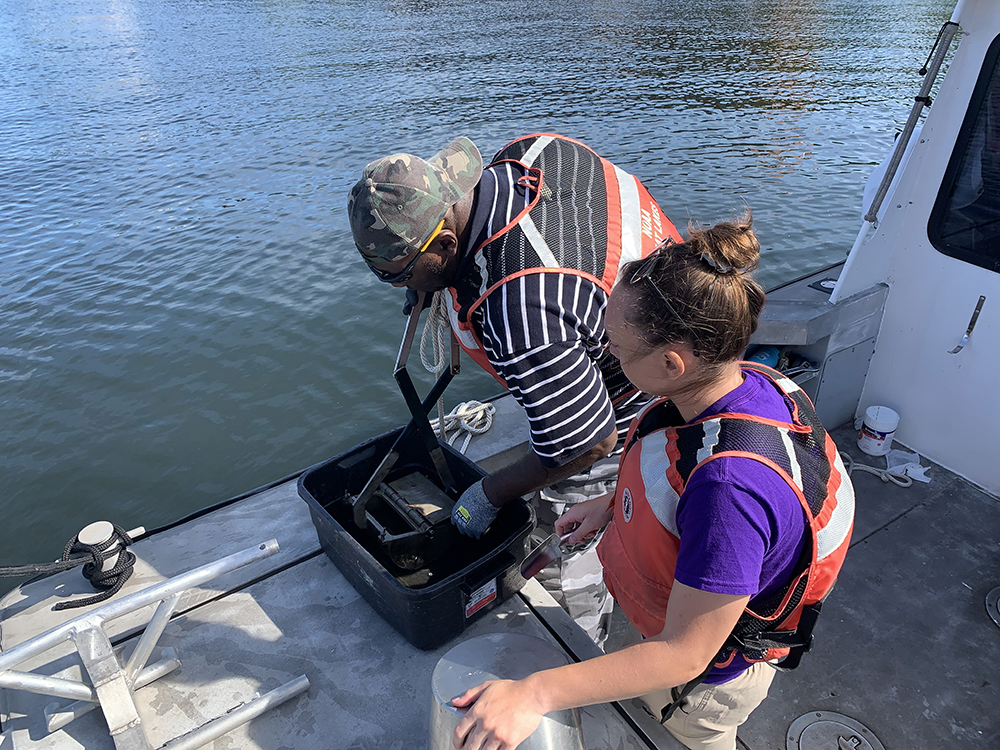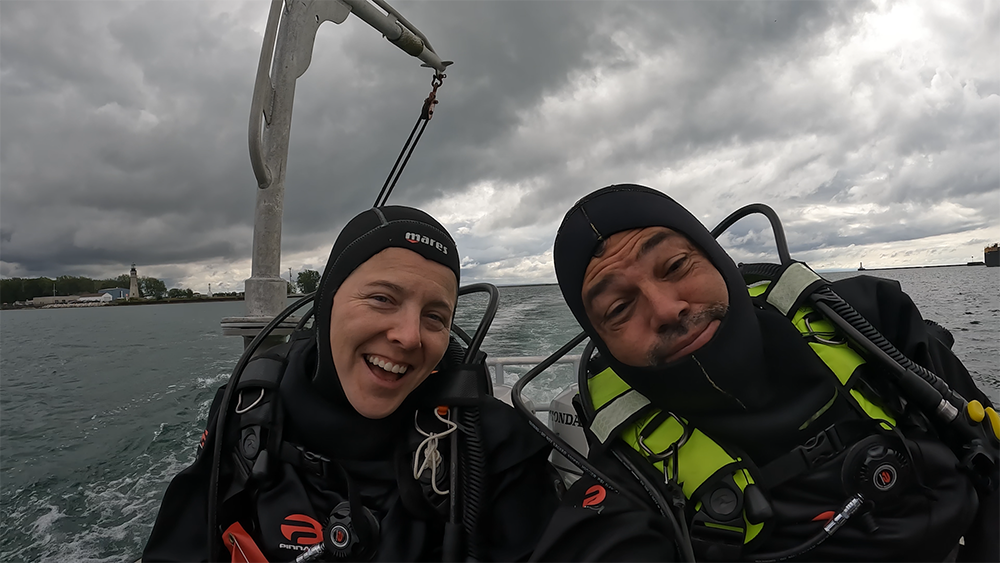
In September, the NCCOS Mussel Watch Program and its partners completed a seven-week sampling mission to determine the amount of contamination in the Great Lakes and its potential to damage ecosystem health.
Over the coming months, the researchers will analyze the water, sediment, and bivalve shellfish samples for a suite of inorganic and organic chemical contaminants, including mercury, pesticides, per- and polyfluoroalkyl substances (PFAS), and other Chemicals of Mutual Concern (CMCs). CMCs are emerging, unregulated, and potentially toxic chemicals, identified as priority contaminants by the US–Canada International Joint Commission.
Bivalve shellfish, such as mussels, can serve as ideal indicators of chemical pollution. They tend to bioaccumulate pollutants from the large amounts of water they filter, they have limited mobility, and they are found throughout the U.S. coastal zone.
The NCCOS Mussel Watch Program uses invasive zebra and quagga mussels to monitor contaminants in the Great Lakes. These mussels spread rapidly throughout all of the lakes, except Lake Superior, after their unintentional introduction in the mid-1980s from the ballast water of trans-Atlantic ships.
NCCOS completed the 2022 regional survey in collaboration with the Great Lakes Environmental Research Laboratory, the Lake Superior National Estuarine Research Reserve, and the U.S. Geological Survey (USGS). The sampling effort will inform a comprehensive assessment of CMCs in the Great Lakes, including their distribution and ecosystem-level impacts. The resulting NCCOS–USGS publication is expected to be available online in the second half of 2023.

